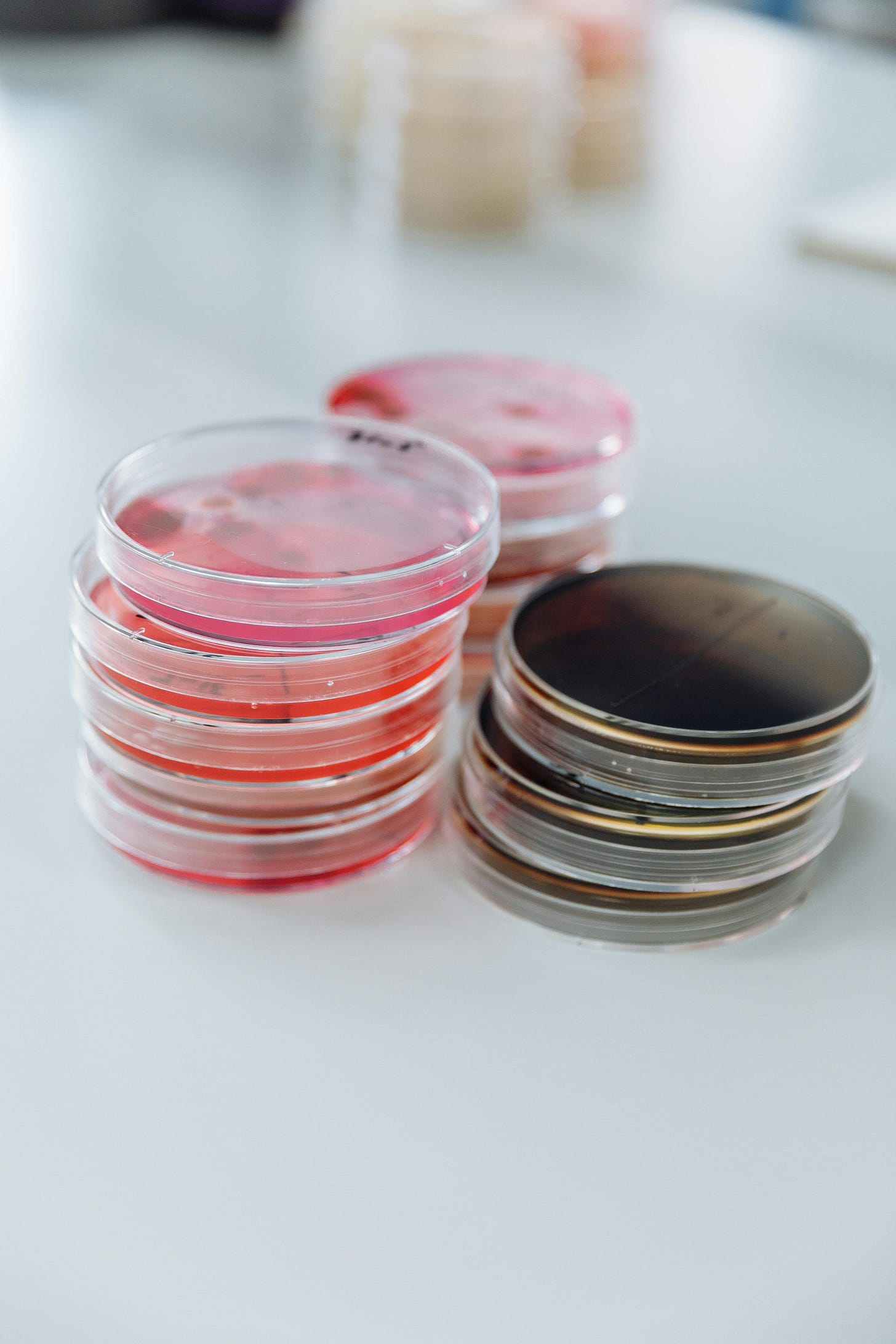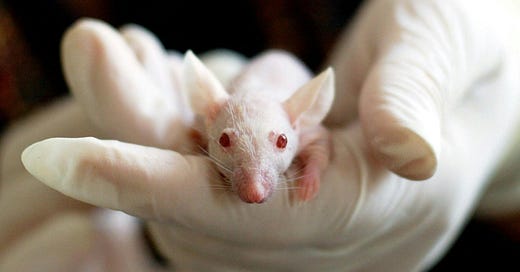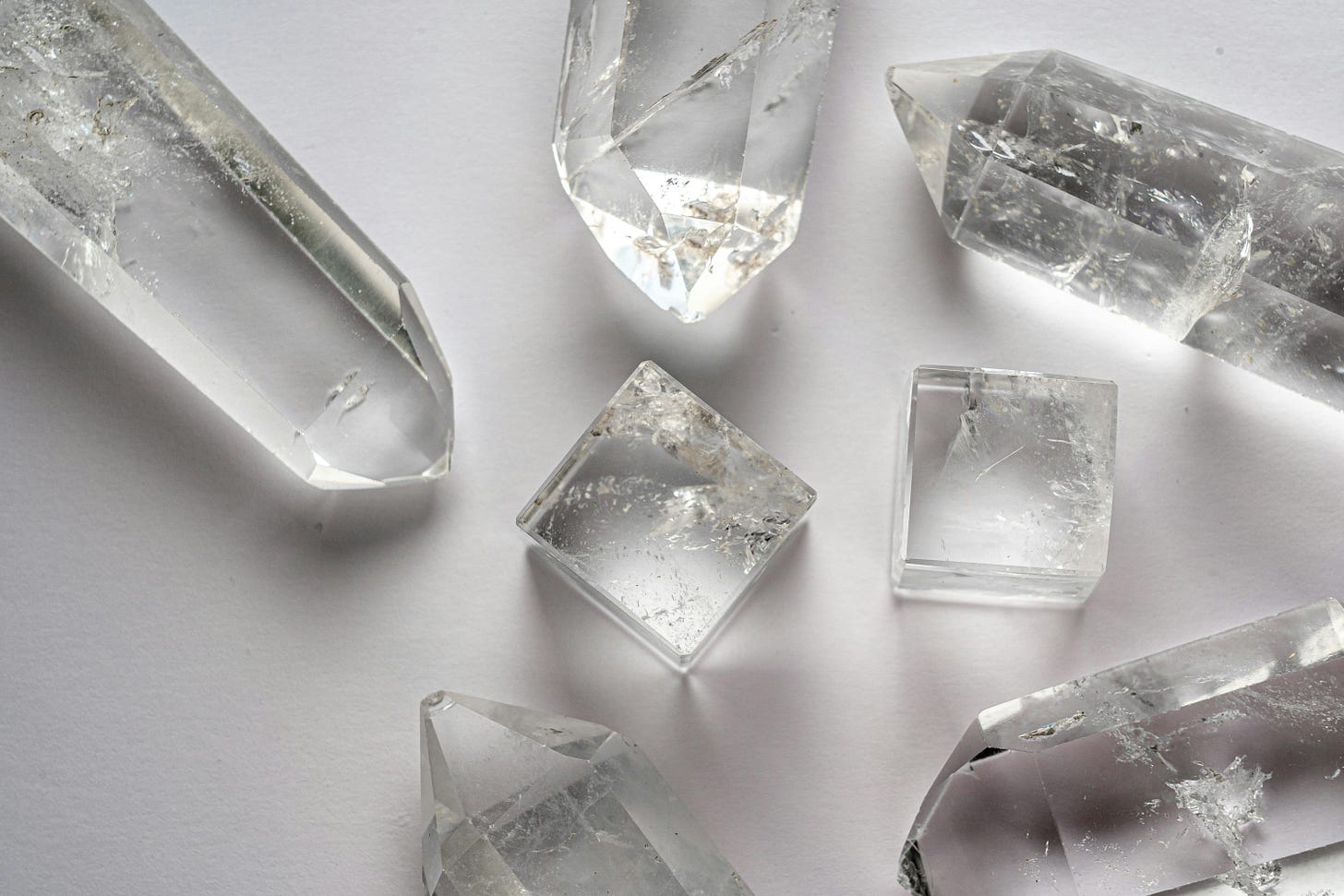The Virus Crisis: Where is the Science?
This is part 2 of a series of posts looking at what I call the “Virus Crisis,” which is that:
Based on the alleged existence of scientifically unverified, disease-causing nanoparticles (viruses), the public is being repeatedly misled, given numerous unnecessary (and likely unhealthy) vaccines, and deprived of inherent rights and freedoms.
To begin dissecting this subject, we really need to understand the basics of science and the scientific method.
What is science? What is its purpose?
According to Merriam-Webster:
“1 a: knowledge or a system of knowledge covering general truths or the operation of general laws especially as obtained and tested through scientific method […]
“Etymology
“Middle English, ‘knowledge, the ability to know, learning, branch of knowledge," borrowed from Anglo-French science, cience, borrowed from Latin scientia ‘knowledge, awareness, understanding, branch of knowledge, learning,’"
In addition, here is a modern definition according to the British Science Council (est. 2003—supposedly the “first official definition” of science ever published):
“Science is the pursuit and application of knowledge and understanding of the natural and social world following a systematic methodology based on evidence.
“Scientific methodology includes the following:
“Objective observation: Measurement and data (possibly although not necessarily using mathematics as a tool)
“Evidence
“Experiment and/or observation as benchmarks for testing hypotheses
“Induction: reasoning to establish general rules or conclusions drawn from facts or examples
“Repetition
“Critical analysis
“Verification and testing: critical exposure to scrutiny, peer review and assessment”
What these definitions come down to is:
Science is knowledge obtained through observation and testing.
Its purpose is to inform us about truths and laws of the natural and social world.
What is a Virus?
While we’re defining things, it feels important to look at the definition of a virus. Let’s ask our friend Merriam-Webster again:
“1 a: any of a large group of submicroscopic infectious agents that are usually regarded as nonliving extremely complex molecules, that typically contain a protein coat surrounding an RNA or DNA core of genetic material but no semipermeable membrane, that are capable of growth and multiplication only in living cells, and that cause various important diseases in humans, animals, and plants […]
Etymology
Middle English, "pus, discharge from a sore, semen," borrowed from Latin vīrus (neuter) "venom, poisonous fluid, acrid element in a substance, secretion with medical or magical properties," going back to an Indo-European base *u̯is-/*u̯īs- "poison, venom," whence also Middle Irish fí "venom, poison, evil," Greek īós "poison," Tocharian A wäs and Tocharian B wase, Sanskrit viṣáṃ, Avestan viš, viša- (also vīš?); (sense 1) borrowed from German, borrowed from Latin
Note how the meaning of the word has changed over time…
This covers the bases pretty well, but just to be certain let’s look at what Nature says:
“A virus is an infectious agent that can only replicate within a host organism. Viruses can infect a variety of living organisms, including bacteria, plants, and animals. Viruses are so small that a microscope is necessary to visualize them, and they have a very simple structure. When a virus particle is independent from its host, it consists of a viral genome, or genetic material, contained within a protein shell called a capsid. In some viruses, the protein shell is enclosed in a membrane called an envelope. Viral genomes are very diverse, since they can be DNA or RNA, single- or double-stranded, linear or circular, and vary in length and in the number of DNA or RNA molecules.”
Both of these definitions are very detailed. One would assume that all the necessary research, testing, and verification have been done in order to achieve this level of “knowledge.” However, according to scientists, when it comes to very small things it’s not so simple to use the scientific method on them. Let’s first take a look at some examples.
Using the Scientific Method
With definitions in place, let’s get practical.
Growing up, we all learned some basic science. As a child, I did an experiment to see what concentration of sugar water grew the biggest rock candy on a piece of string. Let’s look at how that would be done using the scientific method:
First, there had to be a natural observation that would lead to this experiment. Now, as a child I was simply told that sugar crystals would grow on a string soaked in sugar-water. But prior to my experiment, someone had actually observed that sugar crystals grow this way. It was later recommended as a simple science experiment for children.
Next, let’s create a hypothesis that contains only one independent variable (IV). This is necessary because if we use too many IVs we won’t be able to tell which one is affecting the experiment. In this experiment, the IV is the sugar.
Hypothesis: A solution of 2:1 sugar water will grow bigger sugar crystals over a set period of time than a 1:1 solution.
All other things that could be varied are called dependent variables (DVs). DVs must be kept the same from subject to subject for consistency. In this experiment, the DVs are the type of string used, the length of string exposed to the sugar water, the type of cup that holds the liquid, time elapsed, etc. If we changed any of these it could confuse the results.
Next, it’s time to set up the experiment with a control. A control is the baseline of the experiment, which shows how conditions would be without the IV present. This is important to give a basis of comparison and validity to the experiment. In this example, we would omit sugar, which is the IV. We would keep all DVs the same and simply put water in one of the cups.
Now, with three of the same type of cup, three of the same type of string hung the same depth into the cup, we pour in our three liquids: 2:1 sugar-water, 1:1 sugar-water, and plain water.
What results do we find? After observing the string for several days, we find the 2:1 solution creates the biggest crystals. As expected, the control (plain water) did not create any sugar crystals—otherwise our experiment would have been invalidated (as in something else had to have caused the crystals).
Fully validated, the experiment shows that the higher concentration of sugar-water creates the biggest crystals.
By the way, if you’re hungry for some rock candy now, I found this blog on how to create giant sugar crystals!
Applying the Scientific Method to Viruses
Following the same pattern, ideally, this is how the scientific method would look for virology:
It is naturally observed that a virus enters a person & that person becomes sick, showing certain observable symptoms.
We hypothesize that the virus is what caused the person's illness.
Our independent variable (IV) is the virus, which means we need to set up an experiment in which all other variables (dependent variables, DVs) are kept the same. Some examples of DVs might be diet, climate, stress, pollution & allergen levels, pre-existing conditions, etc. Essentially, the best we can do is gather a group of healthy patients.
The virus is introduced via its natural form of transmission to several of the subjects (let's say airborne water droplets). Not forgetting the control group, a few subjects are only sprayed with purified water droplets.
Now we wait several days for any symptoms to show.
If the control group has no symptoms and the experimental group has developed the disease we based our hypothesis on when we first observed the virus, then the experiment was a success and the virus has been validated as the cause of illness.
Unfortunately, virology doesn’t follow this model, for several reason. Let’s look at the problems one by one.
No Observed Natural Phenomenon
It is not possible to observe a virus entering and infecting a host for a few reasons:
Viruses are supposedly nanoscale entities, not visible even by a regular light microscope. Special microscopes, called electron microscopes, are required to view things of this size.
The process for preparing a specimen to be viewed by electron microscope kills any living thing—thus we cannot see a virus affecting a living host.
Even via electron microscopy there is no way to visually distinguish a “virus” from other cell debris, extracellular vesicles, and exosomes (basically, other tiny things that can sometimes end up in samples of bodily fluids). If you watched the Virus Challenge follow-up video in my prior post, the “Pumpkin Challenge” is case in point.
Objective observation is critical to the scientific process (as indicated by the British Science Council above). Why? If you do not start with an observation, you are starting with an assumption. Assumptions introduce bias into the experiment and can lead to contrived results.
We can't say that a virus has ever been seen in nature, doing the thing it is alleged to do. Instead, viruses were first assumed to exist and then processes were created to try to “find” the viruses.
No Independent Variable
Let’s look at one more definition: “Isolate”
1 to set apart from others […]
2 to select from among others
especially : to separate from another substance so as to obtain pure or in a free state…
This is an important definition because our experiment needs an independent variable—the one and only thing that changes throughout the experiment and, therefore, is verifiably the only thing that should be affecting the results.
In other words, we need to get a sample of just the virus.
During the COVID-19 “pandemic” there was lots of nasal swabbing in order to get samples to send to labs for testing. Again, since we didn’t see the virus enter the host we’re presuming it’s there in the nasal fluids.
After the sample has left our bodies, this is the procedure that labs follow for “isolating” a virus:
The swab sample is placed in a viral transport media (VTM) containing saline, fetal bovine serum (or FBS, a derivative of unborn calf blood), and antibiotics to preserve it for transport to the lab.
At the lab, this mixture is centrifuged to separate out larger particles and the remaining “supernatant” (containing the alleged virus, any cell debris from your sample or FBS or killed bacteria, along with any remaining chemicals) is extracted to be cultured.
The supernatant is added to a petri dish containing living cells and cell growth medium (consisting of more saline, FBS, antibiotics, and nutrients).
The dish is then incubated and observed for cytopathic effects (a.k.a. CPE, or cell death). Again, no virus is being visually sought at this point. The setup is meant to culture, or grow, the virus—to get it to feed off of the cells and multiply in the dish. The only way to “know” this is happening is when the cells begin to die.
Once CPE is observed, the virus has been “isolated.”
That's it. That's isolation in virological terms. Any scientific paper you read that uses the term “isolation” is referring to this method of culturing and observing cytopathic effects.
The virus still has not been observed at this point and our culture mixture is contaminated with varying substances rather than isolating anything in the normal dictionary sense of the term. Scientists then extract from this mixture to carry out further testing or genomic sequencing and sometimes (finally) imaging of the “virus.”
No Demonstration of Transmission Via Natural Routes
The cell culture supposedly bypasses any need to demonstrate transmission of the “isolated” virus via natural routes. Since cell death is observed, the disease is already assumed to have been demonstrated. This is flawed logic because many of the chemicals in the VTM and cell culture medium have been shown to cause cell death.
I will revisit this concept in another post because, historically, contagion experiments have been a consistent failure across a variety of diseases, including a recent trial to transmit COVID-19.
No Control Group
Remember, the point of a control group is to show how conditions would be without the IV present. As mentioned previously, no virus (the IV in this experiment) has been isolated. However, one might at least use the nasal swab of a healthy individual as a type of control. But this is not done, either.
When scientists do try to include some type of control in their experiment they do what is called a “mock control,” in which the “virus” (aka the centrifuged supernatant with its debris, antibiotics, and toxic chemicals) is not added to the healthy cell line growing in the petri dish. However, this “mock control” is not subjected to the same conditions as the other specimens, invalidating it as a control.
Note: Currently, an independent researcher and his team are carrying out true control experiments for not only cell cultures, but also PCRs and RATs. I will be writing a separate post on this. I recommend checking out his Substack in the meantime.

So Where Does This Leave Us?
Virologists have trampled over the scientific method in their attempt to justify the existence of viruses. The cell culture is only one tool that scientists use to “prove” viruses, however. We have yet to examine microscopy images, testing, and genomics.
Science is a tool we can use to understand the world, but only if it is used correctly. The fact that the scientific method has such rigid protocols is exactly what makes it reliable for what it can verify.
I can’t just say, “I think thunder is caused by giants bowling in the sky,” and then proceed to justify my belief by collecting rain samples to see if I can find any “giant DNA,” or altering sound clips from a bowling alley to see if I can account for the “giantness” of the supposed ball and pins in the sky, or taking photos of the clouds during a lightning flash to see if I can see any “giant” shaped objects on the other side. It’s interesting, but that’s not science.
I find it possible that early virologists were truly motivated to alleviate disease (or at least gain prestige for doing it). But if so, their enthusiasm eclipsed scientific reason.
This doesn’t leave us with nothing, though. Before germ theory took over the scientific community there was an alternative theory for the cause of disease. Though I haven’t researched it as closely as virology, it’s an intriguing idea and I wonder where we would be if it had not been overridden by germ theory. A community is building around this idea and lots of thoughts are being shared—though it obviously lacks the backing of research funding and is subject to censorship and suppression in mainstream media. I hope this can change in the future.
For now, all I can add is that it has to be okay for an experiment to fail. Fallibility is a necessary risk of good science. We don’t have to invent ways to cover up a failure—in fact, it can be harmful to do so. We need to be able to be okay with saying “I don’t have the answer” or “that didn’t work” and try something else. The current model doesn’t incentivize that.
Germ theory has repeatedly failed and falsified or fudged its results to pass scrutiny. Virology, perhaps, being the worst offender.
That’s not right. It’s time for this to stop.
With love,
Ordinary Girl
Recommended Reading / Viewing
“The Case Against Cell Cultures” article by Mike Stone, independent researcher
“The Scientific Method and Its Absence in Virology” (67 min video, English translation), Originally presented at the XXII Russian Scientific Conference
The COVID-19 Fraud & War on Humanity - 44-page, cross-referenced essay on the manufacturing of the COVID-19 pandemic by Drs. Mark & Samantha Bailey
Or, for the audio/video version:
Part I (27 min)
Part II (23 min)
Part III (19 min)









